Engineering Projects
Please note that, as a consultant, not all of my engineering projects are featured on this website due to confidentiality agreements. Many of my most innovative and complex works are conducted under strict NDAs to safeguard client privacy and security. However, I would be happy to discuss my expertise and recent projects in more detail during a conversation. Let’s connect!
To swiftly navigate to the project, simply click on the thumbnail.
Top Skills Applied Working as a Design and Stress Engineering Consultant
FEA ANALYSIS
STRUCTURAL
PRESSURE VESSEL
HYPERELASTIC
ANSYS / APDL / WORKBENCH
SPACE CLAIM / DISCOVERY
AUTODESK / INVENTOR
AUTOCAD / VAULT
SOLIDWORKS
MACHINE DESIGN
MODELING
DRAFTING
HAND CALCS
STANDARDS & COMPLIANCE
CLIENT ORG SPECIFIC
AAR
ASTM
ISO
GD&T
COMMUNICATION
PRESENTATIONS
OPTIMIZATION
TIMELINE PROJECTIONS
DATA ANALYSIS
COLLABORATION
3-D PRINTING
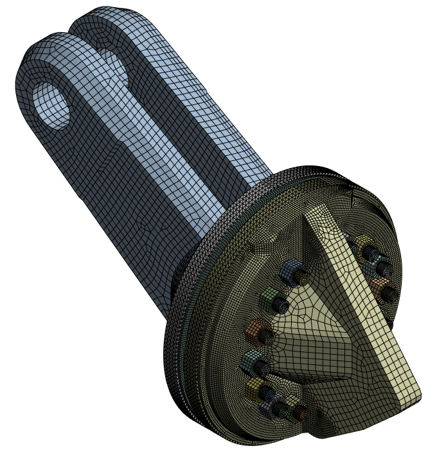

Nonlinear Structural Analysis of Pipe Plug with Hyperelastic Material and Incremental Bolt Torque Simulation
What?
Performed a multi-step finite element analysis on a pipe plug assembly containing hyperelastic materials to evaluate bolt stresses during a prescribed torquing sequence. The project aimed to understand mechanical behavior under realistic loading conditions and validate material assumptions in the absence of complete test data.
How?
Developed a detailed 3D model of the assembly and implemented a staged torque application using Ansys Workbench. A comparative study of hyperelastic material models was conducted using limited experimental data to identify the most appropriate model representing the plug’s elastomeric components. Nonlinear contacts and bolt pretension techniques were used to capture realistic interface behavior and stress evolution throughout the torquing steps.
Results:
The analysis successfully captured the progressive load transfer during the torquing pattern and identified critical stress concentrations in the bolts. A first-order Ogden model, calibrated against available data, was determined to best represent the hyperelastic behavior due to the limited test properties provided. The simulation provided valuable insights into material selection and torque strategy optimization to ensure sealing performance and mechanical reliability.
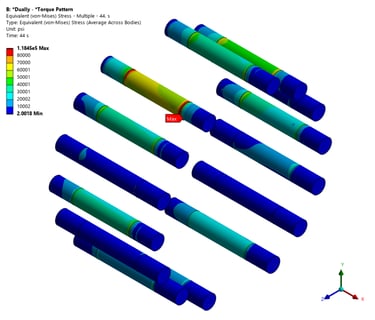



How?
Created a detailed 3D CAD model of the vessel using parametric design principles. Performed finite element analysis in Ansys Workbench to simulate stress and deflection behavior across critical regions, including flange joints, cylindrical shells, and torispherical dished heads. Implemented ASME Section VIII Division 2 design rules, utilizing Stress Classification Lines (SCLs) to categorize stress types and assess compliance with code-allowable limits.
Results:
Successfully validated the vessel design for pressure containment with FEA results. The SCL-based evaluation confirmed compliance with ASME design margins, supporting a structurally sound and code-compliant vessel configuration.

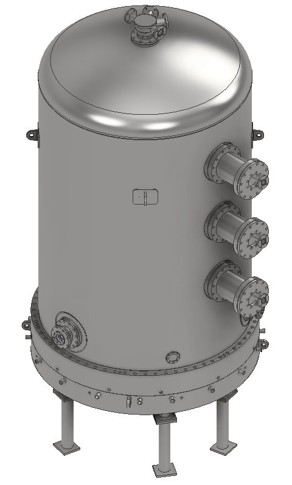

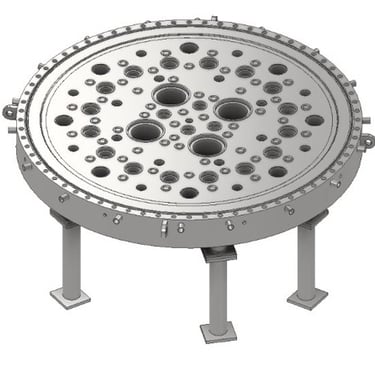
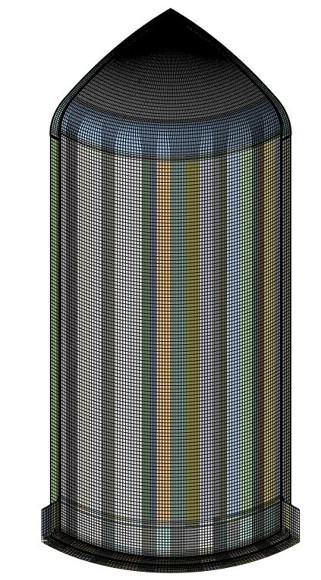


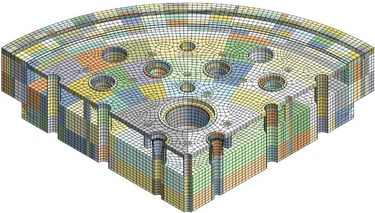
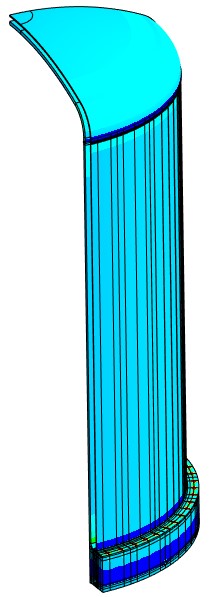


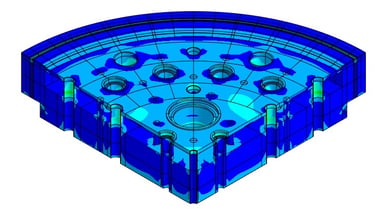
High-Pressure Vessel CAD Model and ASME-Compliant Stress Analysis
What?
Modeled and analyzed a high-pressure vessel assembly in accordance with ASME Boiler and Pressure Vessel Code. The project focused on evaluating structural integrity under internal pressure, with particular emphasis on flange, shell, and head performance.
3-D Designed and Fabricated Demonstrative Physics-Based Simulation Model
What?
Designed, 3D printed, and fabricated a demonstrative model for courtroom use, visually representing complex physics principles for use in a legal case.
How?
Utilized Autodesk's Inventor to create an accurate model and fabricated the prototype using additive FDM manufacturing with high-precision PLA materials.
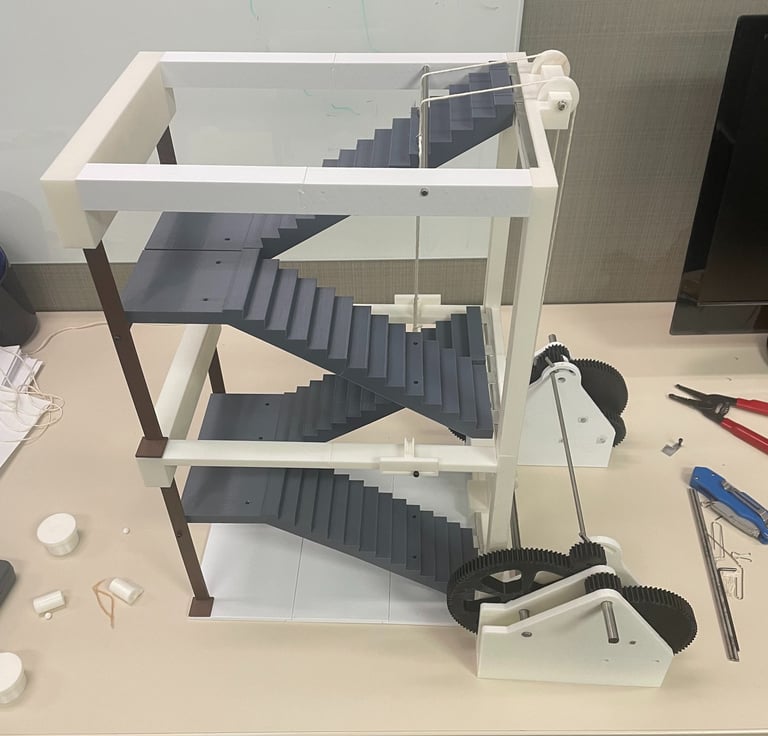

Results:
Delivered multiple functional, visually compelling, and scientifically accurate model, enhancing courtroom presentations and effectively communicating critical case details to legal teams and jurors.
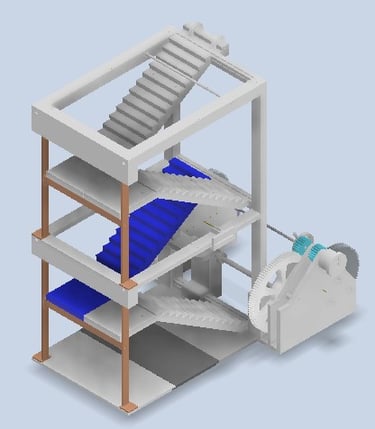

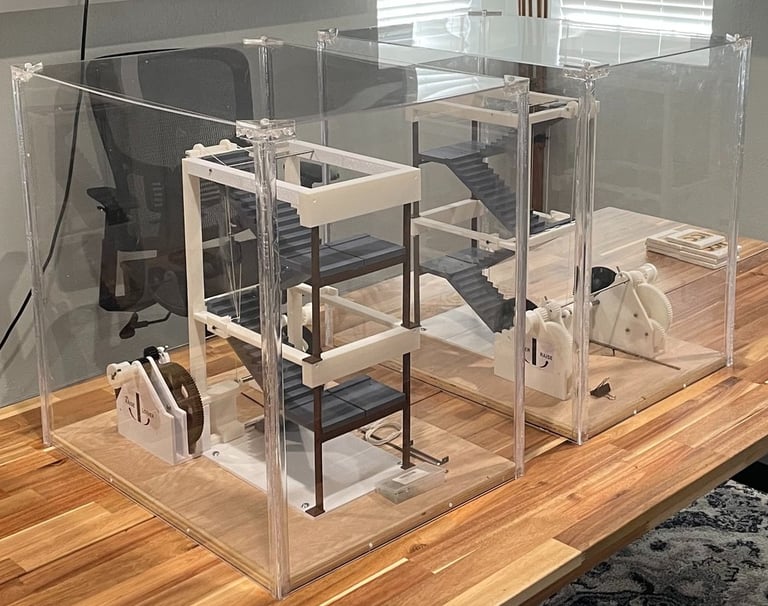

Revolution Mini-500 Helicopter Frame Analysis and Kit Production
What?
Lead a compact team for analyzing, fabricating, painting, and assembling a Revolution Mini-500 helicopter kit to represent UTA pride.
How?
Modeled a weldment frame in SolidWorks from assembled frame and performed structural analysis using FEA software to locate possible failure zones.
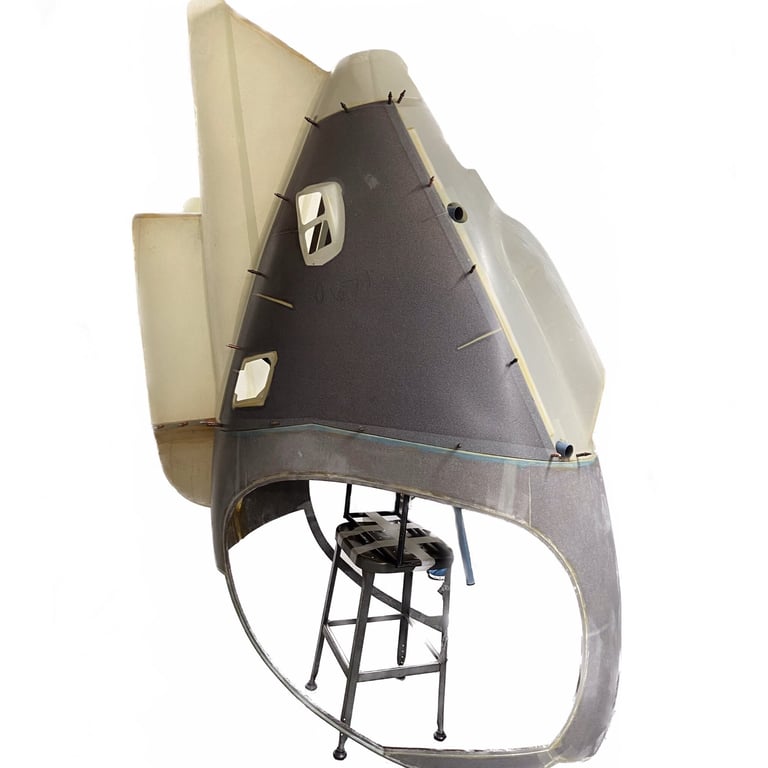


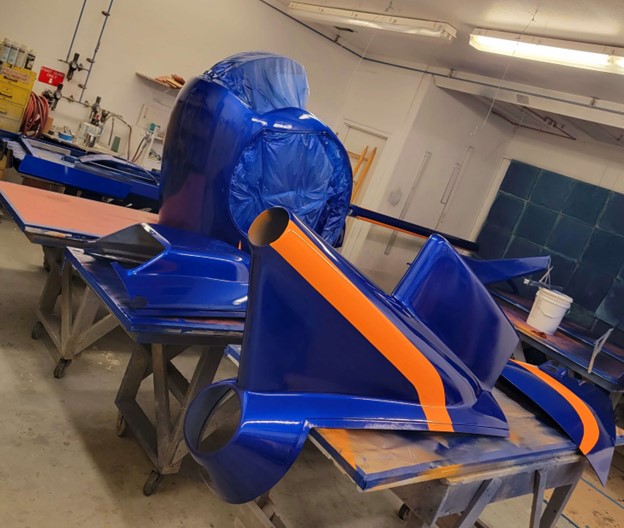
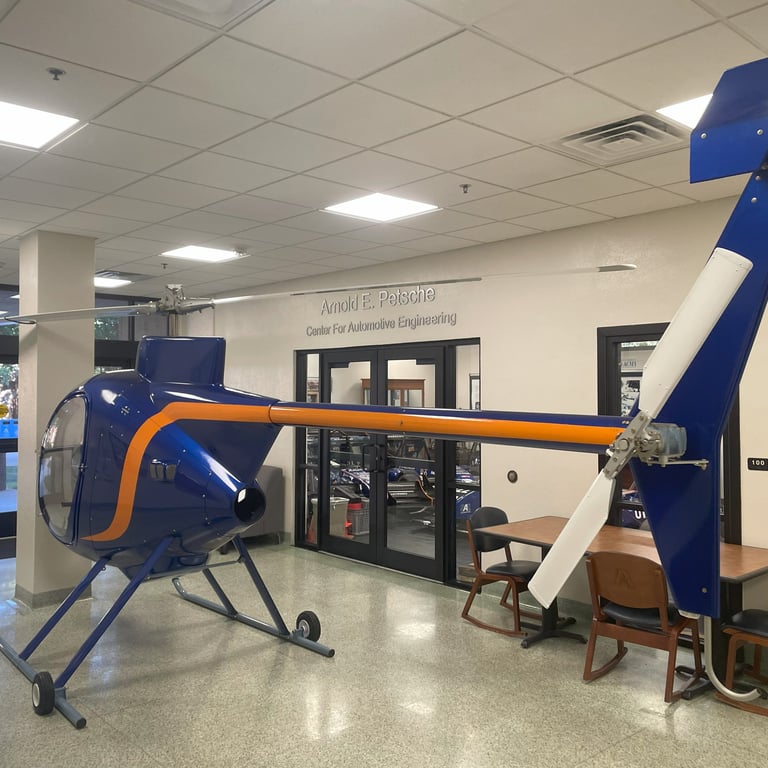

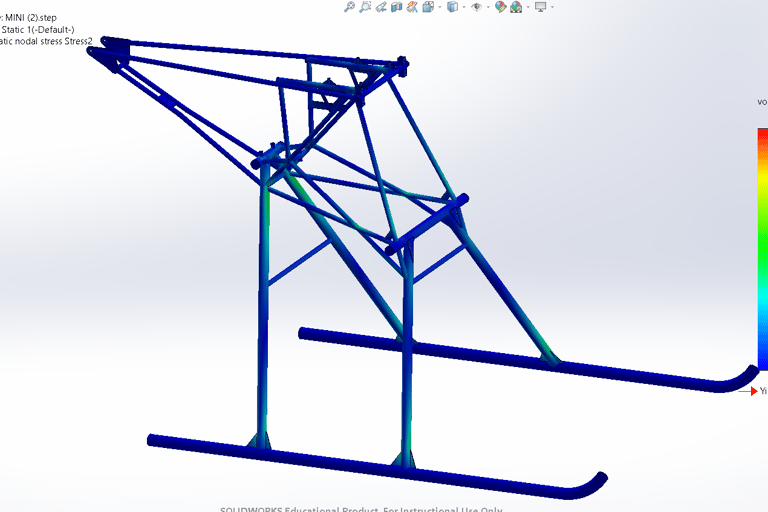

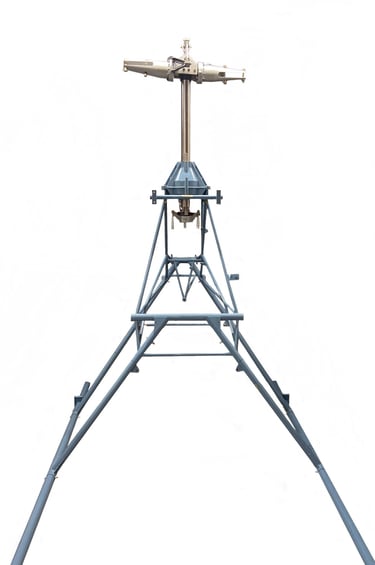

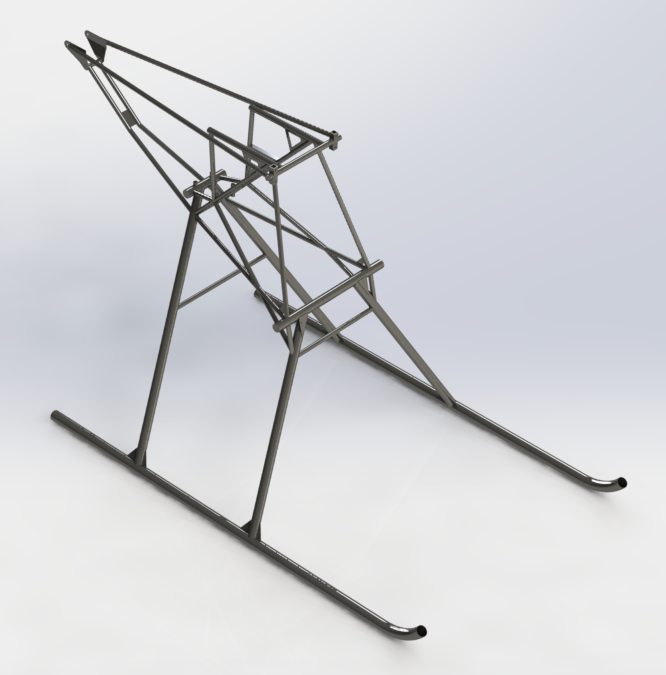

Implemented fabrication modifications, conducted painting, and expertly assembled the helicopter according to a meticulously planned workflow. Created Gantt Chart and rigorously followed for inspections and necessary corrections, while also ensuring the integration of fully functional controls to meet precise specifications and maintain the highest quality standards.
Results:
Presented an aesthetically stunning helicopter as a symbol of UTA Engineering pride, showcased prominently on campus. Additionally, conducted thorough assessments to identify failure zones and provided recommendations for enhancing the fabrication process.
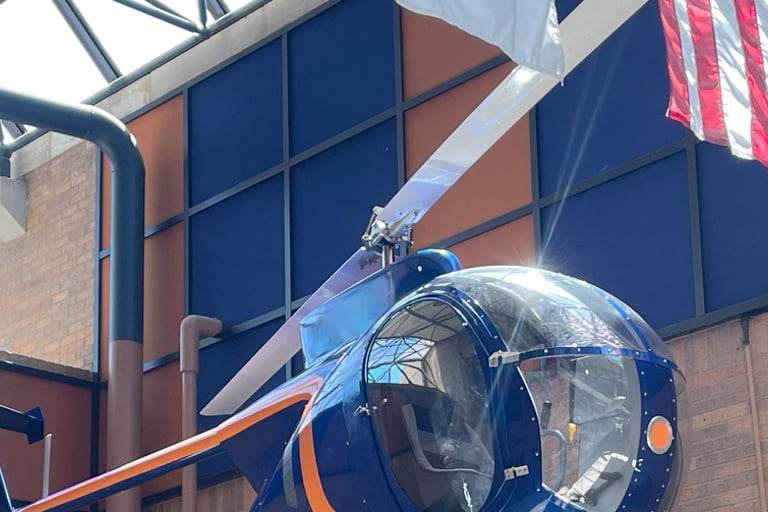

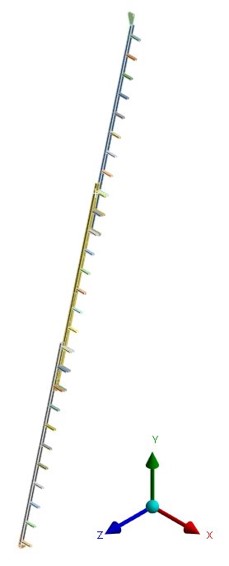

Structural Analysis of 3-Tier Emergency Egress Ladder for Certification
What?
Conducted a structural analysis of a 3-tier emergency egress ladder to verify compliance with ASME design requirements and support professional engineer (PE) approval. The focus was to ensure structural adequacy under emergency loading conditions using a simplified but accurate representation.
How?
Developed a half-symmetry finite element model using shell elements to efficiently represent the ladder's geometry and loading behavior. Applied realistic boundary conditions, service loads, and safety factors in accordance with ASME standards. Evaluated critical stress and deflection responses to ensure the structure met allowable limits for performance and safety.
Results:
Confirmed the ladder design satisfied ASME structural criteria, with all stress and displacement results within code-acceptable limits. The validated analysis and documentation contributed to securing PE approval, providing a certifiable safety rating for manufacturing and deployment in emergency systems.
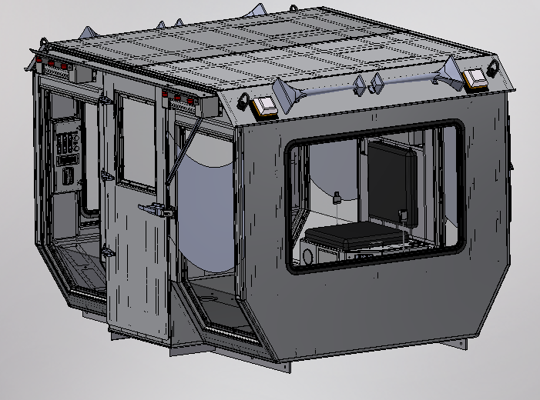

Scaled, Enhanced, and Created Drawing Package for Existing Rail Cab Design Compliant with AAR Standards
What?
Redesigned and scaled a client's existing railroad cab model to meet functional and dimensional requirements while improving structural efficiency and retaining compliance with AAR specifications and provided a drawing package for manufacturing.
How?
Reviewed the client’s original CAD model, identified geometric inefficiencies, and implemented design modifications to improve manufacturability and structural performance. Maintained adherence to Association of American Railroads (AAR) specifications, including Plate C clearance requirements, throughout the redesign process. Scaled and adjusted key features to accommodate new operational constraints without compromising regulatory compliance. Included complete drawing package into client's Vault while follwing the SOPs provided.
Results:
Delivered a refined rail cab model that satisfied all AAR Plate C dimensional constraints while enhancing structural integrity and simplifying fabrication. The updated design reduced unnecessary material use, maintained compatibility with existing systems, and positioned the client for streamlined production with regulatory assurance.
How?
Designed and 3D-printed a component-specific ball-and-socket spherical joint with a stabilized frame, motor mounts, and a touchscreen platform.
Wrote and implemented a C based programming language code for a Raspberry Pi Pico microcontroller and includes libraries for hardware control and communication in I2C, PWM, timers, and UART.
The code defines constants, initializes I2C communication, PWM control for motors, and sets up interrupt handlers for timers. Two main functions are responsible for reading data from an I2C device touch screen and controlling motors based on Proportional-Integral-Derivative control logic. Another function reads data from UART for control inputs from an external Bluetooth module.
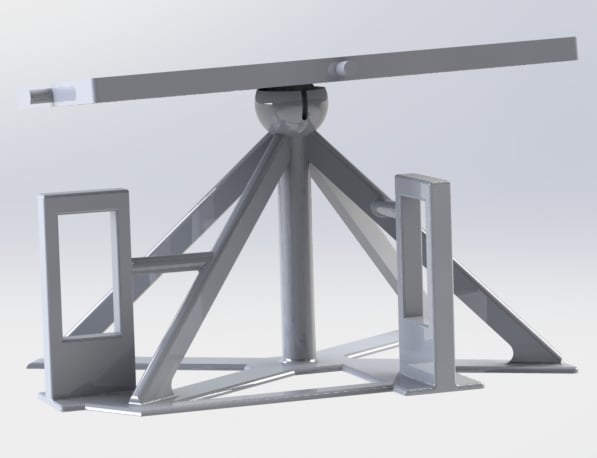

P.I.D. Ball Balance
What?
A stainless steel ball stabilization system using Bluetooth-based selective positioning and a P.I.D. controller, implemented on a Raspberry Pi Pico breadboarded platform.
Results:
A functional system that controls motors based on input data received through UART and touch screen readings, enabling precise positioning of a stainless steel ball and making it suitable for various positional control applications.
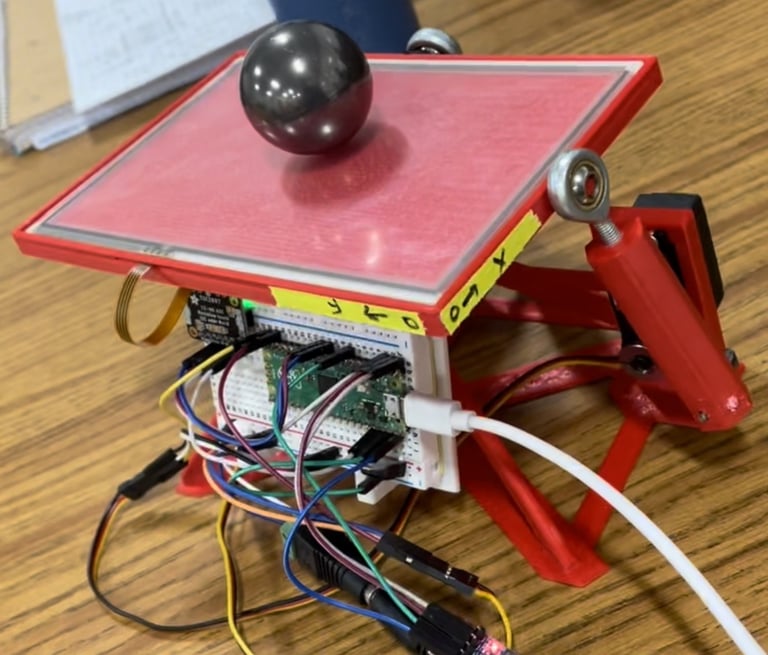


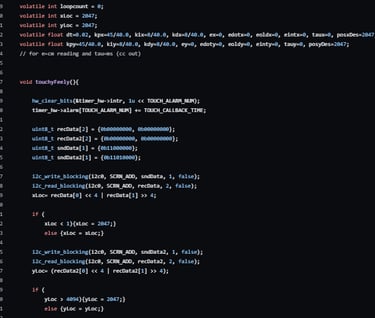
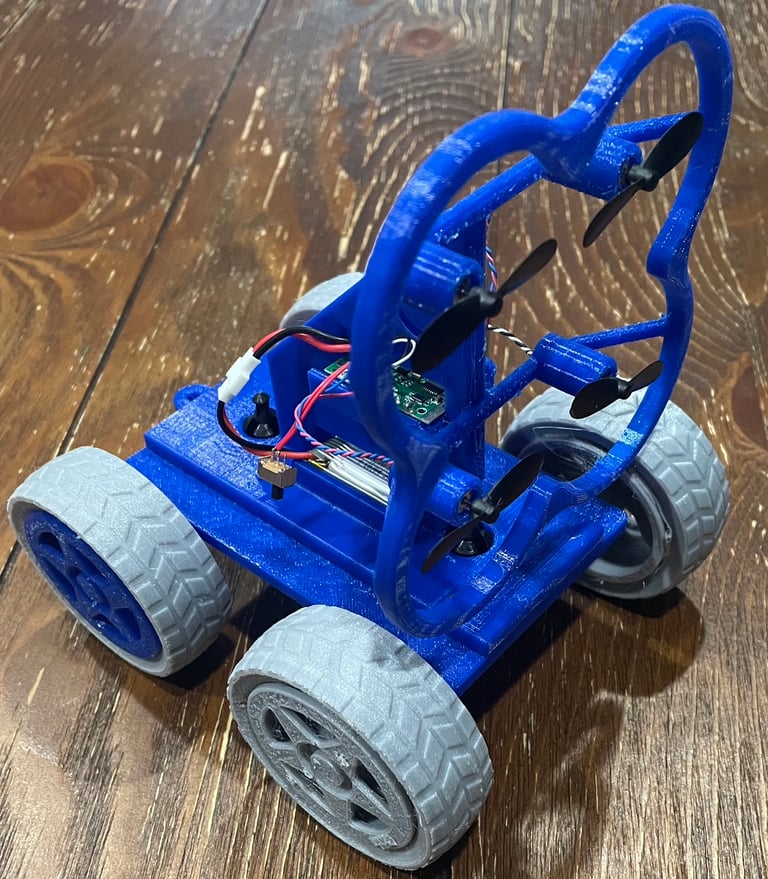

3-D Printed Racer
What?
A battery-operated mini vehicle racer, using 3D printing technology and powered by an airscrew, specifically for a class competition.
How?
Leveraging creativity and innovative thinking, the project centered on conceptualizing an original design, employing 3D printing for construction, addressing weight limitations, and integrating Commercial Off-The-Shelf (COTS) components. The process included vital stages of prototyping, testing, and iterative improvements to enhance the vehicle's performance.
Results:
The project's creative approach and meticulous development led to a successful mini vehicle racer that performed exceptionally well in the competition, showcasing its ingenuity and design prowess. Even today, the project continues to operate flawlessly, a testament to its enduring functionality and engineering excellence.















